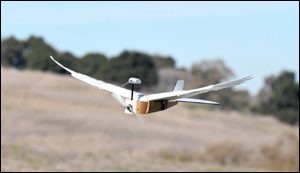Pigeon-inspired drone bends its wings to make it more agile
20. 1. 2020 | Engadget | www.engadget.com
To be able to develop unmanned aerial systems (UAS) more maneuverable than current models, roboticists are drawing inspiration from birds. A team of researchers from Stanford University's Lentink Lab, for instance, has built a robotic pigeon aptly called PigeonBot, which can bend, extend and simply change the shape of its wings like real birds can.
Machines that can move their wings like real birds can make tighter turns in smaller spaces and can better navigate rougher winds, Dario Floreano, a roboticist from the Swiss Federal Institute of Technology Lausanne, told ScienceNews. "Birds can dynamically alter the shape of their wings during flight, although how this is accomplished is poorly understood," the researchers wrote in one of the studies they published.

What they found was that the angle of a bird's wrist and finger determines the alignment of its flight feathers and, hence, the shape of its wings. It's by pulling their wrist and finger together or spreading them apart that pigeons can manage tight turns and fly through turbulence. The researchers then used that knowledge to build a remote-controlled robotic pigeon -- they even used real feathers for the machine.
Read more at Engadget
Image Credit: Lentink Lab/Stanford University
-jk-




